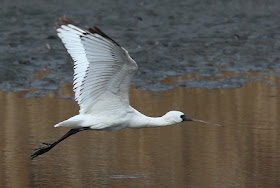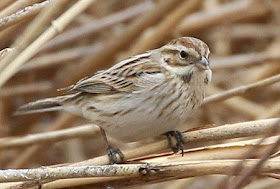Biological monitoring at SUMIDA AQUARIUM
I visited SUMIDA AQUARIUM in Tokyo to see biological impacts of Fukushima No.1 nuclear power plant accident. Though I have visited various places in Japan to see the health consequences of the accident, I have never found any effect against creatures in Japan.
Sumida Aquarium opened May, 2012 in TOKYO SKYTREE TOWN® featuring the Tokyo Tank that replicates the seas of the Ogasawara Islands listed as a World Heritage Site, an indoor open-pool tank where visitors can watch penguins and fur seals up close, and more attractions that offer an intimate experience with marine life, right in the heart of Tokyo.
"Based on the theme of the “Cradle of Life - a Nurturing Aquatic Environment,” SUMIDA AQUARIUM as a whole was designed to be a large cradle nurturing life.
Visitors can enjoy close-up views of penguins and fur seals at one of Japan’s largest indoor open tanks. Furthermore, the aquarium has set up a zone for visitors to watch behind-the-scenes “backyard” operations including the worksites of aquarium keepers. The aquarium welcomes communication between visitors and staff. Friendly and approachable, the aquarium keepers provide us with attentive explanations.
"Based on the theme of the “Cradle of Life - a Nurturing Aquatic Environment,” SUMIDA AQUARIUM as a whole was designed to be a large cradle nurturing life.
Visitors can enjoy close-up views of penguins and fur seals at one of Japan’s largest indoor open tanks. Furthermore, the aquarium has set up a zone for visitors to watch behind-the-scenes “backyard” operations including the worksites of aquarium keepers. The aquarium welcomes communication between visitors and staff. Friendly and approachable, the aquarium keepers provide us with attentive explanations.
Generally speaking, marine creature's growth is so fast than human beings that they are more sensitive to radioactive materials of the environment than us. So I visited SUMIDA AQUARIUM to see effects of the accident against creatures which are grown up by Japanese food and water. Fortunately, I could see them grown up safely and I couldn't find any impact of the accident. It seems that there is no problem for childbirth and child-rearing in Tokyo Japan.
Posted by Yoshitaka Kiriake from Japan on March 25, 2014.
Posted by Yoshitaka Kiriake from Japan on March 25, 2014.
GWには東京都墨田区のスカイツリーに登り、足元にある、すみだ水族館も見てみよう。主に小笠原の魚が展示されているが孵化したばかりのクラゲやアオウミガメの子も展示されていた。浅草寺も近い。2014年1月20日の撮影です。
Japanese spiny lobster
Sumida Aquarium is located at the foot of TOKYO SKYTREE
About TOKYO SKYTREE
Google map
TOKYO SKYTREE, at 634 meters high, is the world’s tallest free-standing broadcasting tower. The TEMBO DECK, located 350 meters above ground, commands a panoramic view of the Kanto region, and even Mt. Fuji in the distance when the sky is clear. At night, the tower is illuminated alternately in the beautiful pale blue “Iki” and violet “Miyabi” themes. Tokyo Solamachi, the neighboring commercial complex, is home to more than 300 establishments including a planetarium, an aquarium, and shops, which constantly transmit trends and information. TOKYO SKYTREE is a world-class landmark of Tokyo.
すみだ水族館
Sumida Aquarium
Tomato clownfish
Hermit Crab
Atergatis floridus
Japanese deepwater carrier crab
Yellowfin red bass
Threespot dascyllus
Sapphire devil
Razorfish
Pennant coralfish
Goldtail demoiselle
Fire goby
Blotched foxface
Whitetail dascyllus
Flathead grey mullet
Yellowfin Goby
Humphead wrasse
Red lionfish
Cherry bass
Bolinopsis mikado
Clinging jellyfish
Spotted green puffer fish
Horseshoe crab
American lobster
Harlequin shrimp
Scarlet cleaner shrimp
Magellanic penguins
South American Fur Seal
Green sea turtle
5 months old
Japanese foods are good and safe.
Because of stricter food safety law by Japanese government, we have no worry about foods.
Ice cream
Senbei : Japanese rice crackers
Sensoji Temple is near here.
About Sensoji Temple
Google map
Founded in 628, Sensoji Temple is the oldest temple in Tokyo. Many people believe that the Asakusa Kannon deity enshrined here has the ability to bestow benefits on earth, and around 30 million visitors from throughout Japan and abroad visit the temple every year.
Kaminarimon : the main gate of Senso-ji Temple, flanked by the statues of the god of wind and the god of thunder, is the symbolic face of Asakusa.
About Sensoji
About 3 years have passed since Fukushima Daiichi nuclear power plant accident. I have visited various places of Japan to see the health consequence of the accident.
Fortunately I have never found any impacts by the accident among Japanese creatures. As far as I know, nobody has health problem which is caused by the accident in Japan.
Our Prime Minister Abe assures that "The situation is under control. The influence of the contaminated water is completely blocked within Fukushima. There are no health-related problems until now and there will never be health problems." He also said that "Tokyo is 250 kilometers away from Fukushima, and the kind of danger that you imagine does not exist in Tokyo. Tokyo is a very safe city."
As PM Abe said, Tokyo is very far away from Fukushima, people in Tokyo have no concern about the nuclear power plant accident. People in Tokyo have already forgotten the accident, because they think radioactive materials cannot reach there.
Our Prime Minister Abe assures that "The situation is under control. The influence of the contaminated water is completely blocked within Fukushima. There are no health-related problems until now and there will never be health problems." He also said that "Tokyo is 250 kilometers away from Fukushima, and the kind of danger that you imagine does not exist in Tokyo. Tokyo is a very safe city."
As PM Abe said, Tokyo is very far away from Fukushima, people in Tokyo have no concern about the nuclear power plant accident. People in Tokyo have already forgotten the accident, because they think radioactive materials cannot reach there.
We know there is no problem for child birth and child rearing in Tokyo. So people in Tokyo are living without any concern about the accident.
I continue to visit various places in Japan to see the effects of the accident, because I can meet various creatures which are more sensitive to radioactive materials from the environment. It is important to see their health for our safety.
公衆衛生ネットワーク
Public Health Network in Japan





































































